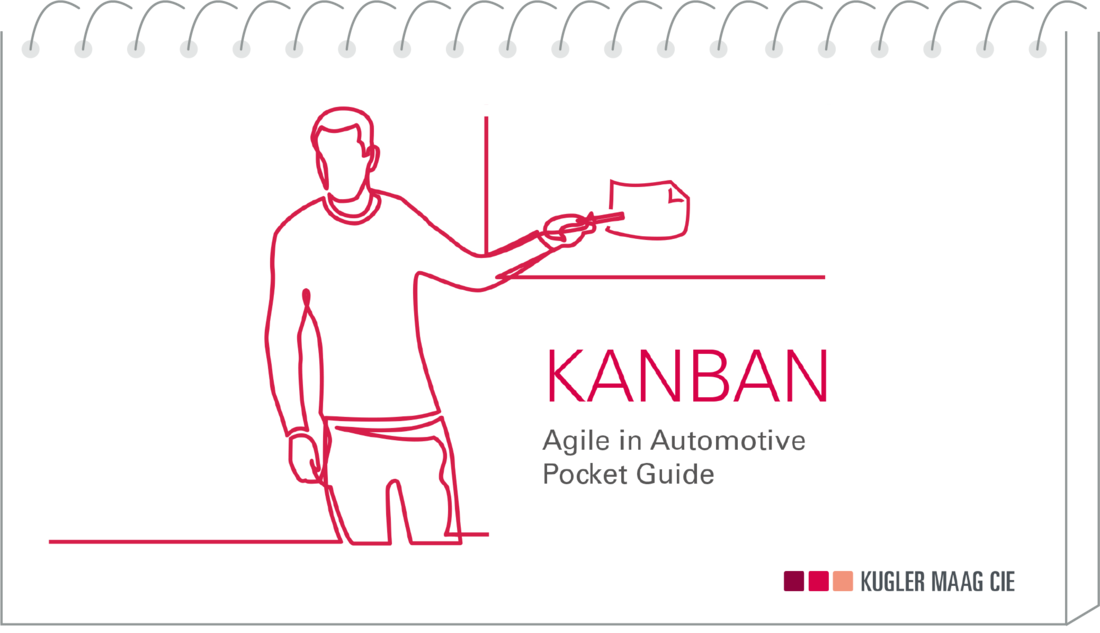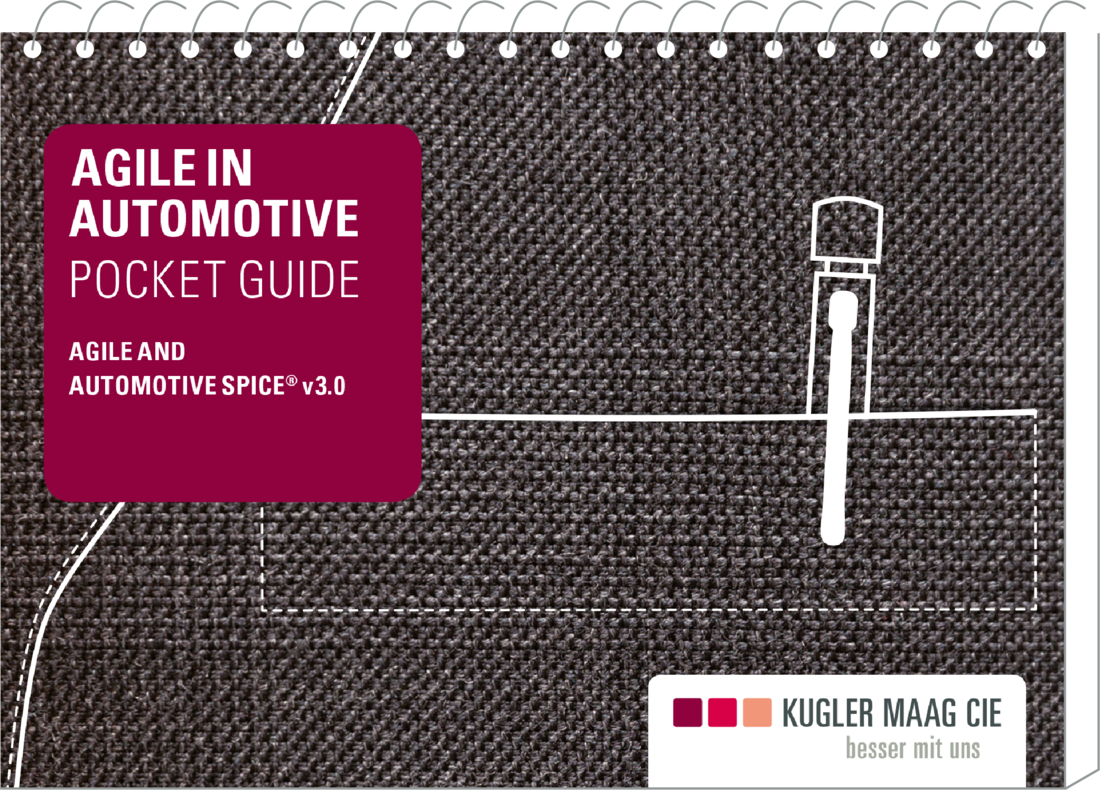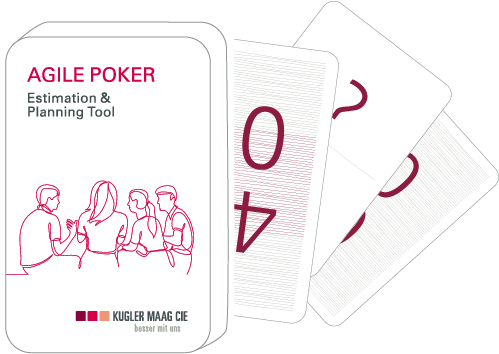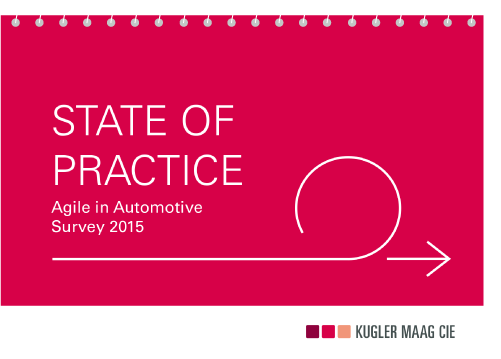
Agile Automotive
In an automotive industry undergoing transformation, remaining adaptable is a crucial aspect of competitiveness. An agile development organisation gives you the ability to quickly adjust your team, project or even your company to new product requirements or market needs.
AGILE AUTOMOTIVE – WHAT DOES THAT ACTUALLY MEAN?
Agility refers to the key ability of a company or one of its business functions to adapt quickly to changing requirements. These may be new customer requirements or changes in the market environment. Being an agile company is therefore about being self-organised, with small teams and units that can manage themselves with a strong degree of freedom. These teams keep in close contact with customers and this makes it possible for them to react quickly to customer expectations. Being so close to the market allows your business units to become customer-centric and thus quickly understand what is expected of them. This also empowers an agile company to lay foundations for becoming a ›learning organisation‹.
Companies involved in the development of automotive electronics have to consider a number of guidelines, including industry standards such as Automotive SPICE® and Functional Safety, but also requirements such as Cybersecurity. They also have to think about any special conditions affecting the company as well as the expectations of senior management. Applying the principles of Agile in Automotive therefore requires agility on two fronts: adaptability when it comes to customers but also adaptability when it comes to the circumstances facing an industry. These are challenges we work through systematically in applying our expertise in automotive electronics.
TEAMS ARE THE STARTING POINT FOR AGILITY
To ensure customers remain centre stage in the future, agile organisations should place emphasis on the lowest common denominator: creative teams. Making teams the starting point automatically changes the way an organisation works as a whole; central management controls are replaced by teams that are self-managed. Every team and every person involved in the process has their own responsibility for the overall success of the organisation.
To allow teams to focus on the task at hand and keep clients top of mind, coordination checks are minimised.
AGILE TEAMS ARE PROTECTED BY…
- Structures, formats and processes – providing clear direction and encouraging people to be self-organised
- An interdisciplinary team structure offering all required skills
- Measures that ensure senior management allow people to work agilely and that they are protected.
AGILE MANAGEMENT
The task of a manager at an agile company is to encourage people to organise themselves. Agile teams interact with management in keeping with defined structures, which provides clarity regarding the expectations they are supposed to fulfil. Going the other way, managers are shown obstacles that hinder the work of their teams.
THE OVERALL ORGANISATION
Your development organisation is only truly agile if it cannot be thwarted by obstacles. The parts of the business that intersect with other areas have an impact on the effectiveness of your R&D function, so we ensure that your HR people, procurement and legal experts see themselves as service providers for development. By using management methods such as Management 3.0, you also discover how to manage your agile development successfully.
A TEAM OF TEAMS
We synchronise collaboration between your different agile teams. To do this, we align the processes of all teams with the ‘release train’. We also select a suitable scale model to match your targets, such as SAFe, LeSS, Nexus and Scrum of Scrums.
AGILE TEAMS
To provide a framework within which your agile teams can collaborate, we structure methods according to Scrum or Kanban principles. Our agile coaches provide important training on key roles such as Scrum Masters and Product Owners. We also coach your team on agile methods like continuous integration and share important agile ideals with others. This allows your team to manage itself once your projects get underway.

Benötigen Sie Unterstützung für Ihr Projekt? Wir sind Ihre Ansprechpartner rund um Managementberatung und Verbesserungsprogramme in der Elektronikentwicklung.
Steffen Herrmann und das Sales-Team
AGILE PROCESSES, METHODS AND PRACTICES
Agile methods such as Scrum and Kanban are effective tools in creating a learning, agile organisation. By using processes of iteration – called ‘sprints’ or ‘cadences’ – concepts can be improved step by step and tested quickly to see if they would be suitable to use in practice. Using short iteration cycles results in the rapid delivery of required insights that can be discussed systematically.
FROM METHODS TO MINDSETS
Agile methods and practices should not be followed with everything ‘running on automatic’. Every customer requirement is different, as is every situation or every external factor faced by the company. And every company is unique. To adapt accordingly, agile methods provide the room people require to manoeuvre properly. The key challenge is to strike a healthy balance between the sometimes conflicting objectives of adaptability and discipline.
SELECTED TEAM-BASED METHODS
Scrum provides a project management framework that allows companies to remain flexible in a volatile market. The aim should be to focus on customer benefits by avoiding unnecessary effort. Development teams should be responsible for organising themselves within a systematic framework. This makes it possible to coordinate work and check with one another quickly and efficiently. By defining roles and processes, Automotive Scrum involves customers directly in the development process.
Kanban is an on-demand planning technique. It highlights bottlenecks with the aim of avoiding hold-ups. Kanban works well with existing roles and processes, and as a result it can be introduced to companies step by step or launched through pioneer teams. Because it creates transparency, Kanban can also be used to experiment with things and implement changes in smaller increments.
Scrum and Kanban complement each other: Scrum keeps things adaptable; Kanban improves output. Both methods raise transparency within a company.
The aim of continuous integration (CI) is to reduce integration problems, such as issues arising from changes of different team members. Changes can be pulled together one or several times a day into a common baseline. An important prerequisite for CI is that there is a shared repository for managing source code which allows it to be carefully checked in or out (commit/update) and synchronised.
Extreme programming (XP) is a software development technique aimed at improving software quality and responsiveness to changing customer requirements. A feature of agile software development is that releases are propagated frequently in short development cycles.
Feature-Driven Development (FDD) is a collection of methods based on best practices that makes it possible to break down longer projects into different stages. The focus at each stage lies in pinpointing further features that add value for the customer.
Test-driven development (TDD) involves initially developing tests step by step based on requirements and rough drafts – enough to deliver a particular feature – then developing the minimum code needed to fulfil these tests. This approach ensures that requirements and the draft solution can be implemented using this code with the added benefit that it clarifies requirements. Tests become an implementable element of the detailed design, which is automatically up to date.
A user story is a description of a scenario from the perspective of the actual user, answering the following questions: Who? What? Why?
A TEMPLATE THAT IS OFTEN USED TO DO THIS IS:
As a <who: type of user>, I want to <what: required action>, so that <why: a benefit/value>.
SCALING AGILITY AT A COMPANY LEVEL
Automotive electronics are developed within complex constellations – different disciplines of engineering interact with each other on different levels, distributed teams work in different locations (at home and abroad), and then suppliers and sub-suppliers contribute to the overall system. This makes agility a very special challenge.
With scaling, the idea is to transfer the principles of self-management within agile teams to entire large units. Being adaptable requires a business to become an organisation that learns, especially larger companies. So we don’t come along with turn-key solutions in such circumstances. Instead, we work through a concept with you to ensure it is suitable for your specific company. Scaling models can provide a template for this process because they make it easier to arrive at a common understanding.
SELECTED SCALING MODELS
The scaled agile framework (SAFe) is the predominant model used by the automotive electronics industry to scale agile methods and practices on any level of the organisation. SAFe is particularly well suited to large development units responsible for delivering a high number of client projects in parallel.
Levels of the business covered by SAFe
- Teams
- Programmes
- Business solutions
- Portfolio management across the entire company
We use SAFe to synchronise these different levels by using a release train, also in order to allow your company to deliver continual benefit.
Large-scale scrum is particularly useful if your company needs to synchronise lots of scrum teams developing a system together. By synchronising scrum events, all stakeholders gain the same understanding. LeSS is based on a radically straightforward philosophy that is an excellent match for certain constellations within companies.
LeSS comprises a number of very simple fundamental elements
- Principles
- Rules
- Experiments
The structure of Nexus is even more minimalist than LeSS, based on low levels of formalised rules. These grant teams more leeway, synchronised by a Nexus integration team. By allowing for a higher degree of freedom, Nexus makes it possible for stakeholders to organise their own tasks more.
Scrum@Scale encourages companies to scale theirexisting scrum setting rather than establish a new framework. Instead of laying down rules, Scrum@Scale poses questions to allow stakeholders to develop scaling concepts themselves.
Synchronisation is achieved by using a product owner cycle and a scrum master cycle.

Need support with a key project? We’re your first port of call when it comes to management consulting and improvement programmes in electronics development.
Steffen Herrmann and the sales team
READING AND TOOLS FOR AGILE PRACTICE
THE KANBAN POCKET GUIDE
This pocket guide provides descriptive explanations of different ways to steer continual development work using Kanban. It also allows you to become familiar with the principles of Kanban, introducing you to useful roles and formats. The pocket guide also outlines detailed rules for making optimal use of a Kanban board.
- 55 pages
- Ring-bound
- Available in English

THE SCRUM POCKET GUIDE
The purpose and application of Scrum in an automotive setting: this Agile in Automotive pocket guide explains the typical roles, events and artefacts encountered in agile vehicle development. Customized Scrum explains the adjustments required to use Scrum in the development of automotive electronics.
- 88 pages
- Ring-bound
- Including practical thumb register
- Available in German or English

AUTOMOTIVE SPICE® & AGILE POCKET GUIDE
Part of the Agile in Automotive series, Automotive SPICE® and Agile provides you with useful support for applying agile methods to electronics development. Particular attention is given to Scrum, Kanban, continuous integration and test-driven development (TDD) in automotive electronics.
Drawing on pertinent processes, the pocket guide explains how to use agile development methods and practices in accordance with Automotive SPICE®.
This pocket guide is only available in English.
- 120 pages
- Ring-bound
- Including practical thumb register

AGILE POKER
This agile tool can be used to help your Scrum or Kanban team estimate required time investments in a fun manner. This estimation method is also sometimes called planning poker.
Short, practical instructions explain how to use agile poker. Ideal for interdisciplinary teams working on complex projects. The agile poker set comes in a sturdy metal box for plenty of planning sessions.

HAPPINESS INDEX CARDS

A straightforward measurement instrument for assessing satisfaction levels among scrum team members. Each person uses an anonymous happiness card to tell the others how they’re feeling at the moment. The scores are then totalled to rate the overall satisfaction levels of the agile team.
An everyday tool for everyday situations. Available on request.

Need support with a key project? We’re your first port of call when it comes to management consulting and improvement programmes in electronics development.
Steffen Herrmann and the sales team
WE CAN SUPPORT YOU WITH…
- Getting your company, project or teams ready and making them more adaptable in preparation for requirements that are about to be introduced
- Creating individual concepts for your organisational structures and workflows to ensure they are a good fit for your company
- Setting up agile teams at your company and scaling them to your concepts at an interdepartmental level
- Identifying processes spanning multiple models and allowing your requirements to dovetail with industry requirements such as Automotive SPICE®, functional safety guidelines and security requirements
- Assessments and evaluations in order to understand the status of your development functions in terms of adaptability and process maturity
- Training and coaching sessions to allow your employees to apply agile principles to actual situations
